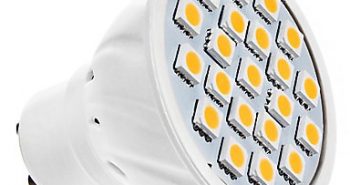 TVs are getting bigger and bigger, and while it can be convenient to watch something on your phone or tablet while you’re in an endless queue waiting to renew your drivers license, there’s no better way to watch a movie than curled up on the couch or in bed in front of a nice large screen.
TVs are getting bigger and bigger, and while it can be convenient to watch something on your phone or tablet while you’re in an endless queue waiting to renew your drivers license, there’s no better way to watch a movie than curled up on the couch or in bed in front of a nice large screen.
One issue is where to put that big screen. If you’ve got a dedicated room for it, that’s great. But even at that, we all have windows, doorways, fireplaces, seating arrangements and other features that have to be taken into consideration when we’re deciding where to put the TV.
Having a built-in or free-standing entertainment or media center is one way to handle it. These can be pretty enormous pieces of furniture that take up most of a wall and cost more than your TV, but they do have accommodations for all the components you might want as well as offer lots of storage for DVDs, games and the like. Also, they neatly solve the problem of multiple, visible cords because they’re pre-drilled for hidden access to wall outlets.
Also out there are stands made for mounting flat screen TVs. They’re available in a wide variety of styles, many with tilt and swivel features and with shelving for components. You could simply place a smaller screen on a regular table, but it’s going to be relatively unstable and subject to side-swiping by passing children and pets.
The way most people place their TVs, though, particularly if they’re monster-size, is to mount them on a wall the same way you’d hang a picture. For one thing, it frees up floor space, and for another, it lifts the screen up to where it can be visible to the whole room as well as a from a distance in an open floor plan. If mounting your TV is on a wall is what you’re considering, here’s what you should know:
DIY or Hire a Pro?
If you’ve got the skills and the tools and a pal to help, you can mount a TV by yourself. But calling in a pro is certainly going to make life easier. No matter where you live, in Durham or Denver, TV mounting services are available and can steer you to the right mounting device for your needs.
Ideal Viewing Distance
Experts vary in their recommendations of how near or far from the TV makes for the best viewing experience, but the suggested range is 1.5 to 3 times the diagonal size of the screen. (You don’t have to do the screen-size math because the size you’ll see on the box is already the diagonal size.) That means that a 40-inch diagonal screen is best viewed from 5 to 10 feet away, a 50-inch screen is best viewed from 6.25 to 12.5 feet away, and a 60-inch screen is best when watched from a 7.5 to 15 foot distance.
Ideal Viewing Angle
The optimum angle from which to watch TV is if the screen is more or less directly straight in front of you when you’re seated. To be precise about it, sit down and measure the distance from the floor to your eyes to give you a sense of where the center of the mounted TV should be. The fact is, though, that most installations are going to look weird if they’re mounted as low on the wall as that measurement would indicate. A mounting device that tilts down will give you the leeway to place the TV higher on the wall.
Other Things to Consider
When you’re mounting a TV on the wall, don’t forget to take these into consideration in your planning:
- Cords. You’re going to be plugging into power and probably also connecting to cable or satellite dish cables as well as add-on components like DVD players and game consoles. There are several ways to conceal cords, from using cord covers to having cords installed inside the wall.
- Components. They’re going to need somewhere to live, so plan on getting a low bookcase or cabinet or putting up floating shelves under the screen.
- Access to ports. The last thing you want is to have to take the screen off the wall to access ports or controls, so use a wall mount that can telescope outward and let you get to the back of the TV.
- Mounting above a fireplace. In some rooms, this is the only option considering that fireplaces are designed to be focal points and most seating is placed facing them. Many experts recommend against it because high heat isn’t any electronics’ best friend, but a mantelpiece will shield the TV from rising heat as long as you don’t pull the screen out in front of it.



